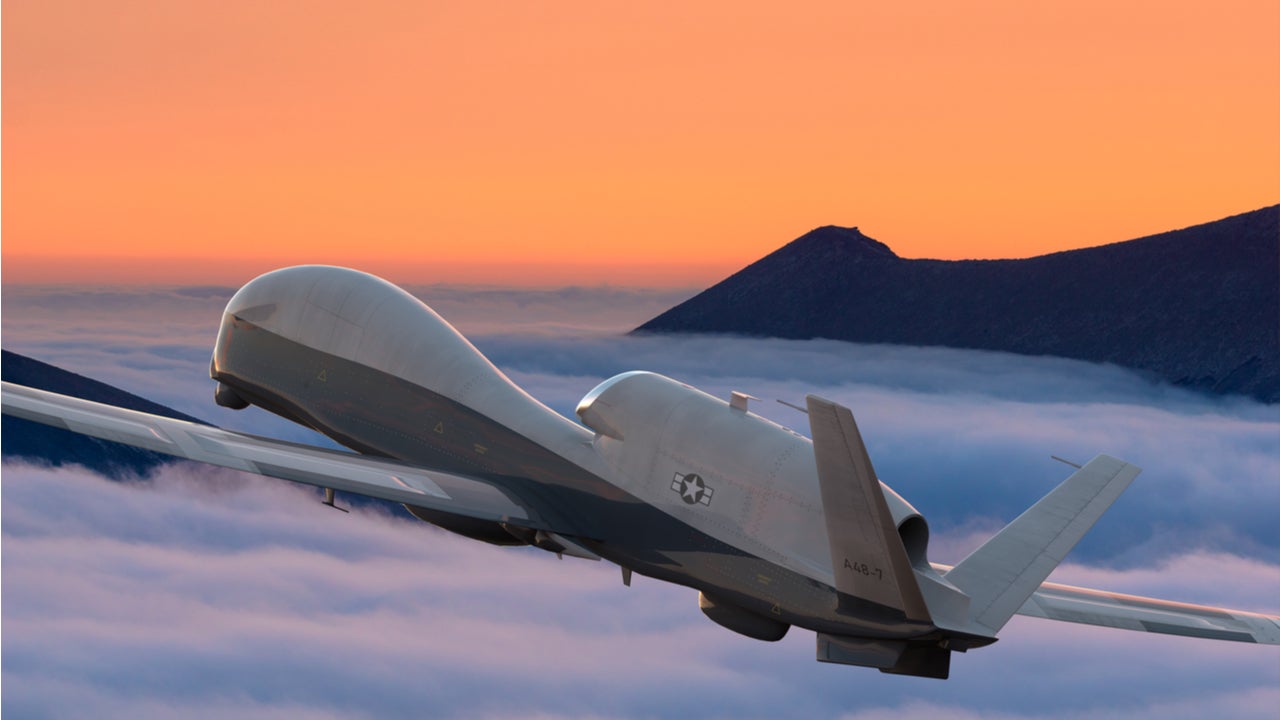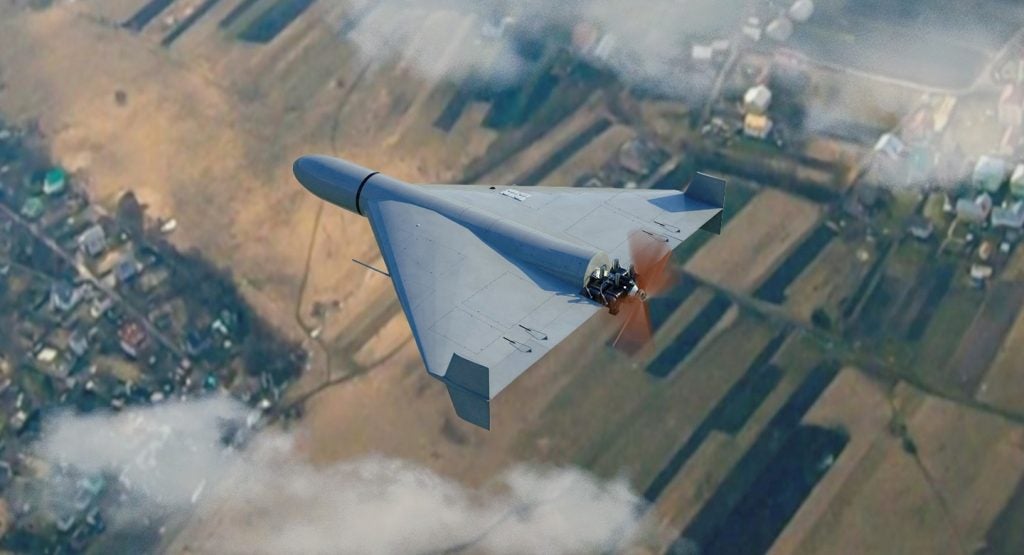Countries across the globe are investing in the procurement, research, and development of unmanned aircraft vehicles (UAVs), which are playing supportive roles now, but their growing size and capabilities can be force multiplier at naval operations in the near future. Maturing AI technology will enable them to perform more sophisticated missions.
Listed below are the key defence and technology trends impacting the drones for maritime operation theme, as identified by GlobalData.
Scalability
To improve flight performance and expand the capabilities of their drones, drone manufacturers are working on scaling drone technology up on one hand, to deliver greater carrying capacity and endurance and down on the other to deliver low cost, small footprint drones for surveillance. The miniaturisation of sensors helps to cut down the overall size and weight of drones and reduce their power requirements. Size, weight, and power consumption (SWaP) metrics are especially critical for military UAVs to support effective intelligence, surveillance, and reconnaissance missions.
3D printing
3D printers have already proved their worth in the aerospace and defence industry. Aerospace, in particular, has seen some of the highest adoption rates across all industries, and the largest players are now transitioning from prototyping to parts manufacturing. 3D printing has been proven to be an excellent manufacturing solution for producing components and parts which contain significantly less material than other comparable, traditionally manufactured parts.
Processor chips
Microprocessors serve as the control centres for unmanned vehicles, providing a platform for control and communications software that integrates with collision avoidance sensors, high-definition cameras, and other sensors. Advances in chip design, driven in large measure by the mobile phone industry, are leading to smaller chips with higher performance and lower cost, which in turn drives down the manufacturing cost of unmanned vehicles.
See Also:
Chip manufacturers are expanding the capabilities of system on a chip (SoC) components to combine multiple sensing and processing elements on a single chip. ARM-based processors from companies such as NXP Semiconductors and STMicroelectronics are among the most powerful in the market, with a major emphasis on low power/low cost. Presently, the market for drone processor chips is actively pursued by Intel and Qualcomm.
How well do you really know your competitors?
Access the most comprehensive Company Profiles on the market, powered by GlobalData. Save hours of research. Gain competitive edge.

Thank you!
Your download email will arrive shortly
Not ready to buy yet? Download a free sample
We are confident about the unique quality of our Company Profiles. However, we want you to make the most beneficial decision for your business, so we offer a free sample that you can download by submitting the below form
By GlobalDataArtificial intelligence (AI)
The growing volume of data gathered by unmanned vehicles will create demand for increasingly sophisticated analysis of that data. To effectively process incoming sensor data and draw meaningful conclusions, unmanned vehicles solutions need to make use of the latest data analytics technologies.
Additionally, AI enables ‘continued learning’ for unmanned vehicles through machine learning (ML) techniques to enable complex capabilities such as autonomous navigation and obstacle recognition and avoidance based on the International. While the industrial sector is already proving to be a significant market for unmanned vehicles with AI capabilities, service sector companies are also vying for AI-enabled unmanned vehicles to develop new business models.
Against this backdrop, the leading AI players are gearing up to establish themselves in the unmanned vehicles market. Microsoft, which is one of the world’s biggest investors in AI technology alongside IBM, Google, Alibaba, Intel, and Amazon, has partnered with DJI, the largest drone manufacturer, to use the Microsoft Azure IoT platform and AI tools for offerings targeted at the construction, law enforcement, and agriculture sectors.
Maritime swarm technologies
Maritime swarming technology is speedily attracting the attention of naval forces globally. Networked unmanned maritime assets are a key future tool for surveillance, data gathering, decoying, protecting high-value units and ports, minesweeping, detecting submarines and limiting capital ship exposure, as well as neutralising or destroying enemy assets. As UAVs improve in terms of SwaP parameters and also become cheaper to produce, with almost complete autonomous capabilities achievable in the near future, swarming, defined as multiple autonomous aircraft networked together, is anticipated to usher in a new era of UAV capabilities.
As this technology matures and applications disseminate into the global marketplace, the applications of such technology in asymmetrical battlefield or urban terror scenarios hold serious ramifications for security agencies facing imminent threats in the wake of both state and non-state sponsored aggression. For instance, hundreds of miniature UAVs can be in synchronised flight for reconnaissance or attack missions simultaneously.
3D technology
The ability of 3D modelling technologies to consume drone data in the form of imagery and radar/LIDAR data and convert it into complete topological models makes it possible to survey and monitor the landscape and the objects within it. Whether the application is the surveying of structures like bridges, buildings, factories or oil rigs, or the monitoring of farmland or forestry, drones are increasingly being integrated with improved sensors, high-definition cameras and computer algorithms that can condense the images into 3D virtual images and enable easy assessment of anomalies.
Industries which require frequent inspection and surveillance of pipelines, tracks, and fields are using drones that can follow pre-set trajectories and simultaneously provide data to the user.
Drones integrated with 3D technologies are beginning to be used to carry out maintenance and repair operations, particularly in inaccessible or dangerous environments.
Battery technology
Most drones today are powered by lithium polymer (LiPo) batteries, which can deliver sufficient energy required to perform standard drone flights. However, the ability to transport increasingly heavy payloads and to conduct more demanding operations in varied environments, is constrained by the fact that current drones are limited in terms of their endurance.
Growing demand for longer flight times and greater carrying capacity is driving drone manufacturers to explore alternative technologies, such as hydrogen cells, gasoline powered solutions, solar batteries, gas-electric hybrid solutions, and laser solutions.
Anti-collision technology
The widespread application of drone technology will require effective anti-collision systems to ensure that they can be operated safely in public places. Different sensor payloads are being developed to establish improved management and control of drones, in order to satisfy regulators and insurers that drones can be operated safely and autonomously.
The European Union (EU) has a USpace programme under the Single European Sky Air Traffic Management Research (SESAR) project and the US’ NextGen programmes are aiding the development of anti-collision measures and also validating the feasibilities of high demanding beyond visual line of sight (BVLOS) operations.
Unmanned aircraft system traffic management (UTM)
As the adoption and application of drone technology becomes more widespread, the need for autonomous UTM system, which can ensure safety, security, and control of drones in low-altitude airspaces, will grow significantly. In addition, the need for UTM is identified as a key enabler for future autonomous passenger drones, vertical take-off and landing (VTOL) air systems and beyond visual line of sight (BVLOS) operations. Taking cues from the established air traffic management (ATM) system, UTM initiatives are primarily focused around three parameters – communications, navigation, and surveillance.
Drone delivery
Drone delivery is the most anticipated, and hyped, commercial application of drone technology. Encouraged by Amazon’s vision of drone powered package deliveries, the global drone community has shown great interest in this new model of distribution. With numerous initiatives currently in pilot testing worldwide, it is expected to cause significant disruption to existing industrial distribution channels.
Some companies are looking at hyper-local/hyper-personal drone delivery by applying AI, 3D, and augmented reality (AR). For instance, IBM’s drones can recognise a person’s need for coffee using inputs from his/her wearable gadget and deliver it from a nearby coffee counter. In addition, companies such as Volocopter and Ehang have demonstrated the capabilities of passenger delivery via drone, suggesting a new, cost effective mode of transport. Uber also initiated the Uber Elevate programme to evaluate feasibilities of deploying passenger-carrying VTOL drones.
This is an edited extract from the Drones (Unmanned Aircraft Vehicles) for Maritime Operation – Thematic Research report produced by GlobalData Thematic Research.









Related Company Profiles
Amazon.com Inc
Google LLC
Microsoft Corp
Alibaba Group Holding Ltd
Intel Corp